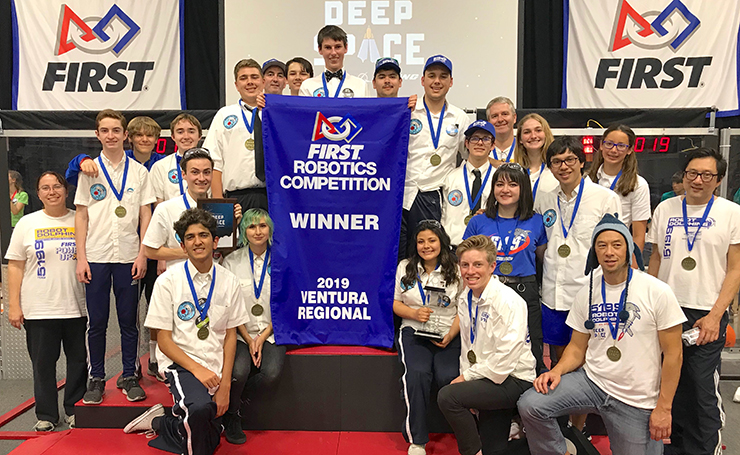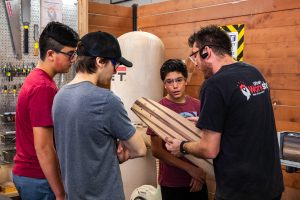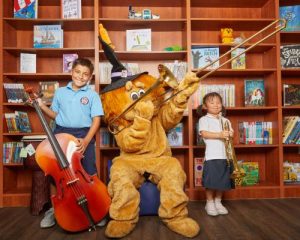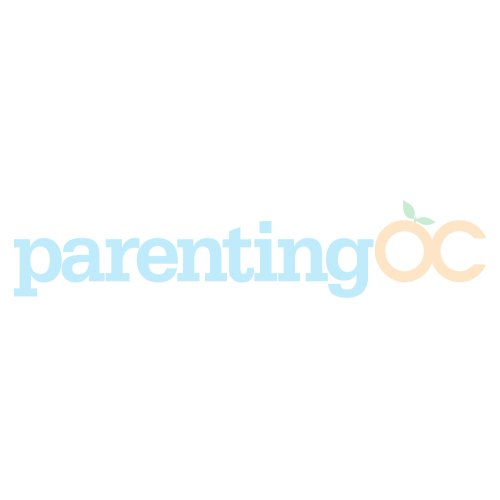
Troy High School’s Science Olympiad team winning the 2019 National Tournament at Cornell University.
OC is home to some of the greatest science, tech and robotics teams in the country.
Troy High School in Fullerton has created a monster.
A bunch of whip-smart students has carefully and methodically built up a towering behemoth so fierce, it has dominated a nation for more than two decades. At least that’s one way of looking at Troy’s legacy at the Science Olympiad.
When you want to point to one of Orange County’s stars of STEM, this one is pretty hard to miss. Sparkling STEM programs all over the county are engaging their students in ways many parents could have only dreamed about when they were in high school. And each has its own specialty. For Troy, it’s the Olympiad.
The long-running team competition annually throws down a mind-boggling (at least for some) gauntlet of scientific challenges in biology, chemistry, earth science, engineering and physics, among others.
Since 1996, Troy has won the national event 13 times, including five of the last six years and the last three years in a row. No other high school in the U.S. has even come close.
That’s a monster team. Even if the team changes every year.
But casting such a big, bad shadow creates its own problems. The kind most people would like to have.
“On the one hand, success breeds success, as in high school sports programs. On the other hand, it is also true that staying on top can be more difficult than getting there,” says advisor Justin Kim. “Over the decades, we have been fortunate to attract many students who come to Troy with the express purpose of making it onto the Science Olympiad team. That constant source of fresh blood keeps students hungry, as they themselves have not experienced firsthand the accomplishment of winning a national championship.”
Kim is not exaggerating. For the students, both the high challenge and the unique honor are indelible.
“Science Olympiad will forever be a significant part of my life,” says team captain Louis Wong. “The competition has definitely changed my approach of how to look at education, because even things as basic as study habits have improved as a result of being in the Olympiad. It gives you a new outlook on the things you’re learning in the classroom by providing a look into how these things can be used in reality. It never truly ends. Since it has given me so much, I hope to continue to have it be part of my legacy by supporting Science Olympiad sometime in the future. However, being a part of the Nationals Team at Troy and winning the national championship, I’m just happy to be part of an organization dedicated to allowing students to explore their interests in the sciences and engineering.”
And being part of the team is a key element, Kim says.
“An underrated aspect of Troy’s success is the way students motivate one another,” says Kim. “Just making the Troy Science Olympiad team is a tall challenge, and once on the team, there is plenty of intra-squad competition over the course of the season for spots on the final Nationals Team.”
In fact, Shivana Anand, one of the team’s vice captains, has thrived on it.
“I always feel like I walk out of every single practice having learned something interesting from one of my teammates,” she says. “When I joined, I remember feeling an immense sense of obligation and responsibility. While initially intimidating, I think it ultimately served as a powerful source of motivation for me, especially the first few competitions when I was still trying to figure out exactly what I was doing.”
The team’s other vice captain, Patrick Rim, says he’s gained knowledge and exposure to parts of the scientific world he wouldn’t have in the classroom itself, and he knows the team environment has made him better.
“I’ve learned the value of teamwork and the motivation we can provide to each other,” he says. “I learned pushing each other to study harder and to prepare harder, we can achieve success beyond what we as individuals are capable of, as we did at the National Tournament last year where we won the championship.”
Anand also notes how it changed her fundamental view of learning, describing the world of the Olympiad as one of “curiosity and trial-and-error and discovery” that compelled her “to let go of my reservations of the possibility of failure and fully embrace it as part of the learning process.”
And Kim feels a deeper drive to maintain the school’s incredible legacy: He’s a Troy High School grad — class of 2005 — and was also once a member of the team.
“While there’s inevitably some pressure to keep the team competing at the highest levels, I also, having now come full circle, am full of feelings of gratitude and privilege to be a part of the program,” he says. “Students are cognizant of the legacy of those that have come before them. Not solely in terms of Science Olympiad, but also in the way our alumni have gone on to some of the world’s great academic institutions and use their scientific skills and knowledge in their careers.”
Alumni have gone on to Yale, Harvard, MIT, Caltech, Stanford, UC Berkeley, UCLA and UC Irvine, and several are now working in medicine and technology, including at Google, Qualcomm, Children’s Hospital Los Angeles and Lockheed Martin.

The Dana Hills High School’s Robot Dolphins winning their first “blue banner” in the 2019 Ventura Regional Robotics Competition.
Coffee and Robots
Robot Dolphins From Outer Space sounds like the title of a pretty fun B-movie, but it’s actually the nickname of the robotics team at Dana Hills High School.
The five-year-old program is building success along with robots, winning the 2019 Ventura regional, a competition sponsored by Boeing.
“It’s not chess club or ‘BattleBots,’ but it’s very intense,” says teacher Rick Jung. “There are 7,000 teams around the world and the competition is growing. It’s ramping up.”
Teams build and test robots in just eight weeks designed to do specified tasks in an obstacle-type course and must adhere to strict weight limitations. And sponsors like Boeing, NASA, and various aerospace and tech companies are watching.
“The kids learn problem-solving, time management, coding, mechanical engineering, electronics, wiring and website development,” Jung says. “It’s their main varsity sport. They’re trying to have the kids aspire to be Elon Musk or Steve Jobs instead of football players. Kids in this program are more likely to get accepted into top schools and are relearning lost skills like using hand drills and soldering and things. It’s a big head start for college.”
Senior Jack Fallon, a future medical student, hopes to utilize his skills learned on the robotics team in the growing use of robotics in medicine.
“For me, it’s the application of everything we learn,” Fallon says.
Students often get frustrated when they’ve reached the higher levels of science classes and it’s no longer tangible, he says. “It’s all being synthesized into one project. Almost any other outside project, I don’t experience the level of application.”
Not everything is about national competitions, nor does it have to be. Sometimes, just coming up with a way to improve somebody’s cup of joe can have far-reaching effects. It worked out pretty well for the founders of Starbucks.
Jennifer Merritt is an engineering teacher at Laguna Beach High School, where she leads a class emphasizing engineering design and analysis. Each semester, students take up a theoretical customer inquiry and must pose analytically engineered solutions. Her current group is tasked with creating a coffee mixture that has a lower acidity level compared to what most people drink.
“They have asked us to examine different combinations of variables — fine grind or coarse grind, coffee to water ratio, brew temperature, brew time and the ability to agitate the solution,” Merritt says. “There are 24 different experiment combinations and the students run experiments and analyze the data using spreadsheets to determine which combination will give the customer the desired cup of coffee in the quickest time while considering costs.”
Merritt believes it allows the kids to find the science and engineering in anything.
“It is a good experience for students to look at designing an experiment with a lot of variation, as well as being able to analyze data and come to an appropriate recommendation for the customer,” she says.
“We also look at the chemistry of brewing coffee, as well as the roasting process and all the nuances that go into brewing coffee. Students seem to enjoy learning about the roasting process and the qualitative factors that are used in assessing whether coffee is ‘good.’ It allows them to see that engineering doesn’t always have to be about building or creating a product, but it can also be about refining a process.”
By Shawn Price







Leave a Reply